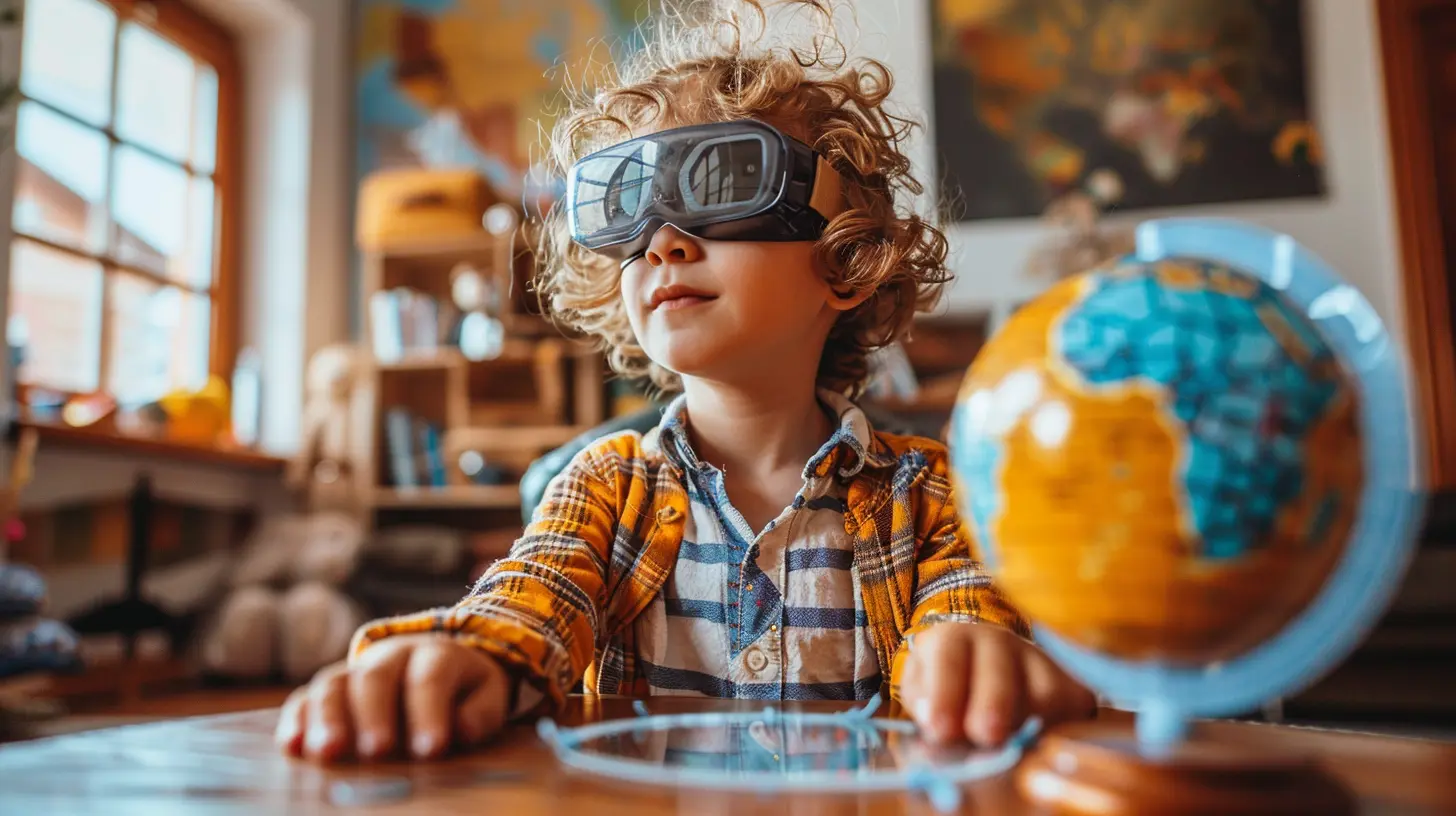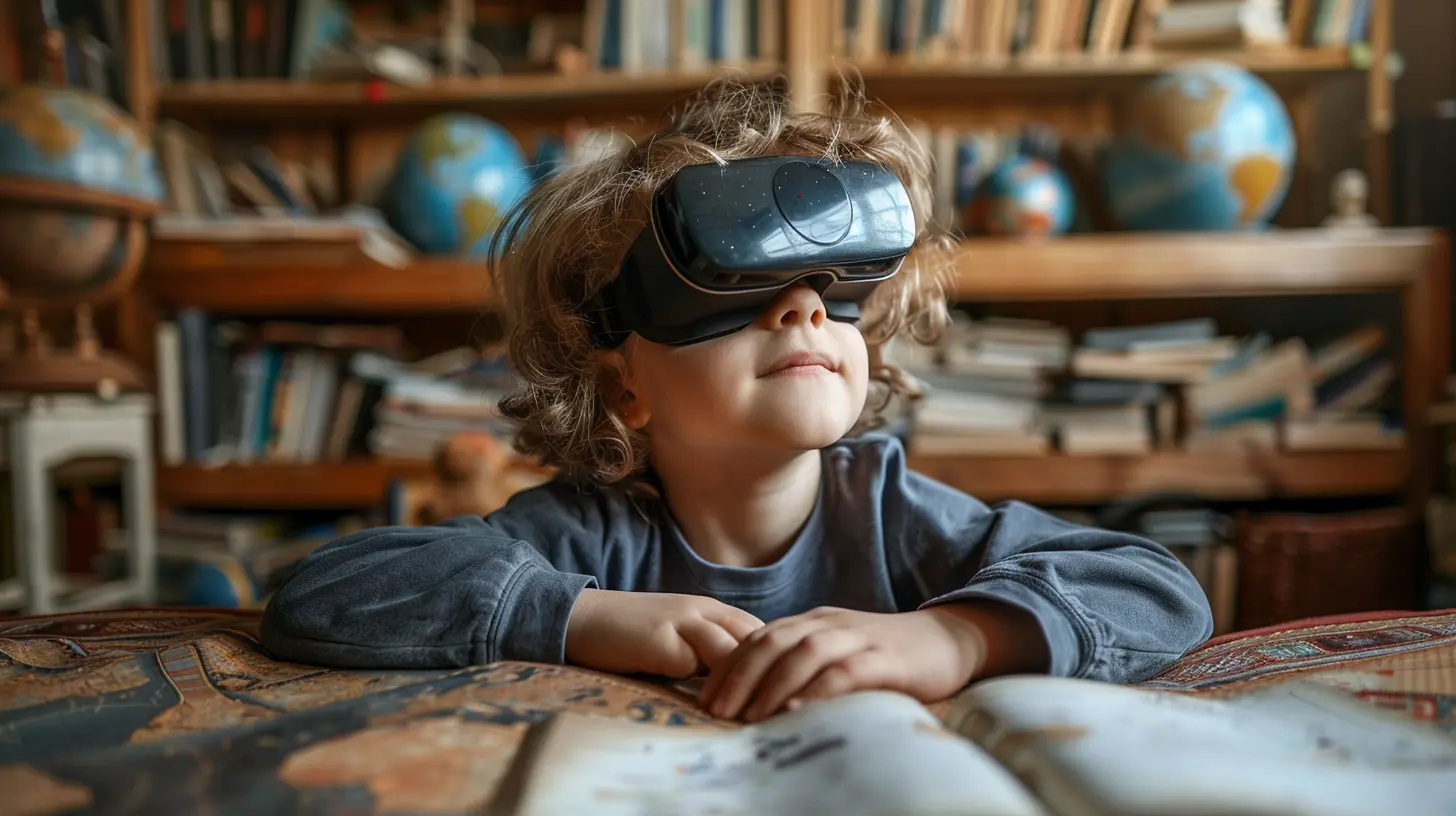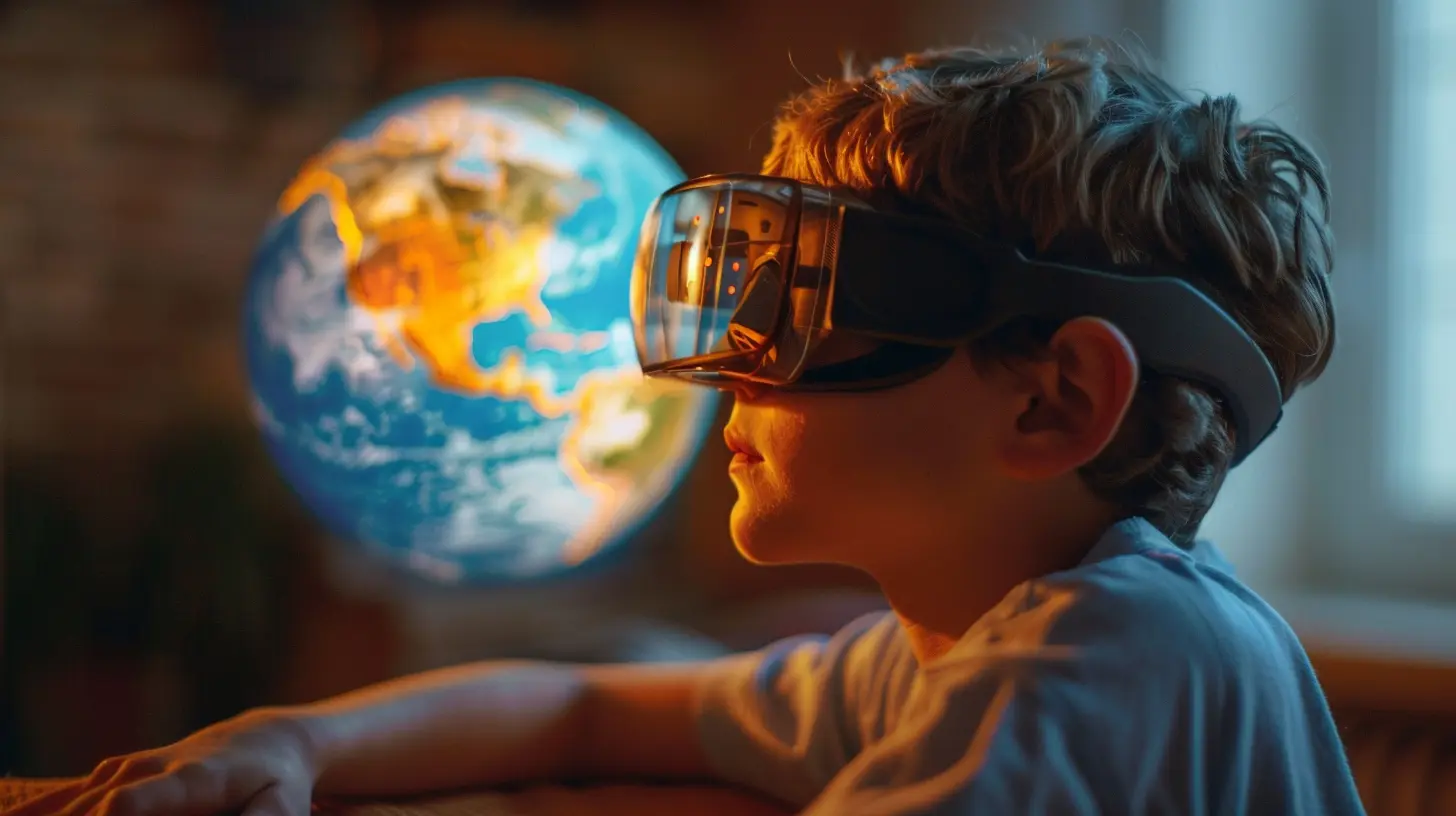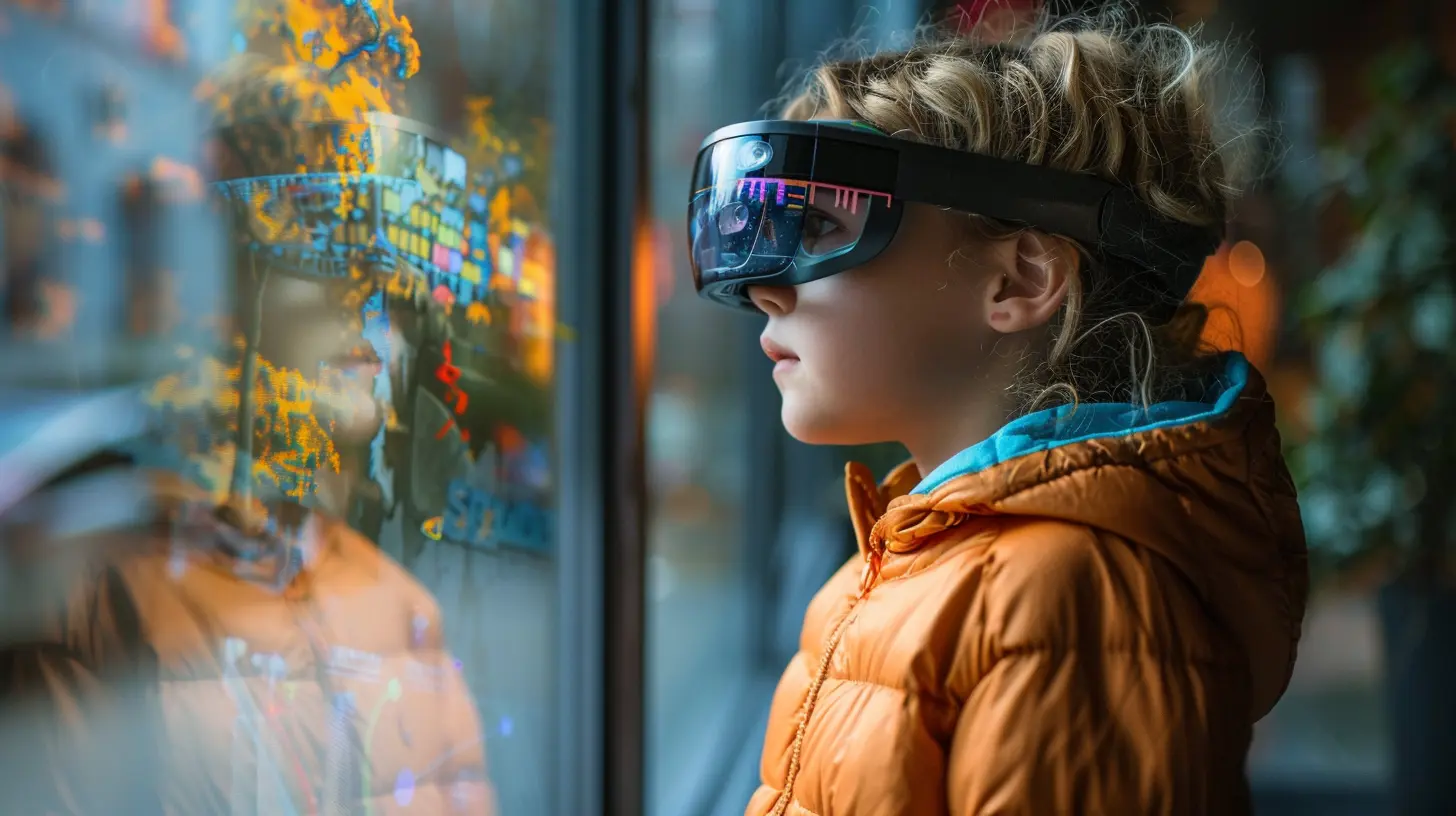How to Use Augmented Reality to Teach Kids About the World
9 June 2025
Remember when learning meant flipping through dusty encyclopedias or sitting through endless lectures with overhead projectors? Those days are long gone, my friend. Kids today are growing up in a digital wonderland, and as parents, it's up to us to keep up. One of the coolest tools you can tap into right now is Augmented Reality (AR). It turns real-world learning into a game, a story, and an adventure—all at once.
But wait—what even is Augmented Reality? And how can it help teach our kids about the big, wide world out there? Pull up a chair and grab your coffee, because we’re breaking it all down in a way that makes sense, even if you’re not particularly tech-savvy.
What is Augmented Reality, Really?
Let’s not overcomplicate it. Augmented Reality (AR) is basically the blending of digital content with the real world. Imagine your child pointing a tablet at their dinosaur book, and boom—a roaring T-Rex pops out and stomps across the kitchen table. That’s AR in action.Unlike Virtual Reality (VR), which takes you into an entirely different world with headsets and such, AR keeps you rooted in reality but adds cool, interactive layers on top. It’s like popcorn on a movie night—it just makes everything more fun.
Why AR is a Game-Changer for Kids’ Learning
Okay, so we’re sold on the “fun” part. But what about the educational benefits? Here’s where it gets exciting. AR isn’t just entertainment—it’s a powerful learning tool. Here's why:1. Makes Abstract Concepts Tangible
Ever tried explaining the solar system to your 5-year-old? Yeah, not easy. But point an AR device at the sky, and they can see the planets revolving around the sun in real-time. That makes it stick way better than a textbook ever could.2. Promotes Active Learning (Rather Than Passive Watching)
Let’s be honest: most screen time is just kids staring blankly at cartoons. AR flips the switch. It turns them into explorers, problem-solvers, and curious thinkers. They touch, move, interact—so the brain is firing on all cylinders.3. Perfect for Visual and Kinesthetic Learners
Not all kids learn the same way. Some need to see it. Others need to touch it. AR brings both to the table. Whether it’s seeing the inside of a human body or manipulating 3D shapes, kids can literally experience what they’re learning.
How to Use Augmented Reality to Teach Kids About the World
So, how do you actually bring AR into your home in a way that helps your kids learn about geography, history, nature, and cultures? You don’t need to be a tech wizard or drop a ton of money. Let’s dig into the how-to’s.1. Use AR-Based Educational Apps
There are tons of apps out there that fuse learning and AR together beautifully. Here are a few that are parent-approved and kid-loved:- Merge Cube – Your phone turns a cube into a virtual globe, a beating heart, a volcano—you name it.
- QuiverVision – Kids color a page, then watch it come to life in 3D. Great for geography, nature, and science.
- JigSpace – Hands-down one of the best for breaking complicated systems (like engines or ecosystems) into interactive 3D models.
- Google Expeditions (AR) – Go on a virtual field trip anywhere in the world, from the Great Barrier Reef to the International Space Station.
Just download the apps on a tablet or smartphone. No fancy gear required.
2. Turn Passive Play Into Learning Moments
At a glance, AR might seem like it’s all play and no work—perfect! That’s the sweet spot. The trick is to guide the experience without taking over. For example:- If your kid is exploring ancient Egypt in an AR app, ask questions like:
- “Why do you think the pyramids were built that way?”
- “What do you think the pharaohs believed about the afterlife?”
That back-and-forth encourages critical thinking, and hey—you might learn something too!
3. Link AR Experiences to Real-World Outings
Just visited the zoo? Keep the learning going with an AR animal app that shows how lions hunt or how elephants communicate. Planning a vacation? Use AR to "visit" historical landmarks before you go.The more you connect digital experiences to real-life ones, the deeper the learning goes. It’s like putting pins in a map—except the pins roar, fly, and sometimes even sing.
4. Incorporate AR in Arts and Crafts
Got a little artist at home? Combine coloring books with AR (like Quiver mentioned earlier), and suddenly their dragon drawing breathes fire. This clever combo improves creativity while sneaking in lessons about anatomy, habitats, and mythology.And let’s be real—as parents, we love anything that keeps the glitter off the floors.
5. Explore Cultures and Languages Through AR
Learning about other cultures shouldn’t be stuck in black-and-white photos in old textbooks. AR can bring faraway places to life:- Watch a traditional Japanese tea ceremony unfold before your eyes.
- Learn how to speak French with interactive flashcards that animate the words.
- Walk through the streets of Rome, guided not by a teacher, but by a digital tour guide right in your living room.
It’s like backpacking the world—without leaving the couch.
6. Use AR to Teach Environmental Awareness
Want your kids to care about the planet? Show them what’s at stake. AR environments can simulate coral bleaching, deforestation, or endangered animal habitats in ways that feel real and urgent, not just hypothetical.When kids see a polar bear’s melting habitat in 3D, they’re more likely to connect with the cause. That emotional investment? That’s the seed of lifelong awareness.
Tips for Parents Getting Started with AR
Alright, you’re ready to dive in. But before you hand over the iPad, here are a few things to keep in mind:✅ Keep It Supervised
While AR is awesome, it’s still screen time. Set boundaries and stay involved, especially for younger kids.✅ Check the Age Appropriateness
Not all apps are created equal. Look for ones that match your kid’s developmental stage and interests.✅ Balance Physical and Digital Play
Encourage kids to apply what they learn in AR to hands-on fun. If they just studied volcanoes, maybe help them build one out of baking soda and vinegar afterward.✅ Talk About What They’re Seeing
After the AR session, ask open-ended questions. “What surprised you the most?” or “Which part do you want to explore next?” keeps the conversation going beyond the screen.Thinking Ahead: The Future of AR in Education
Here’s the thing—AR isn’t just a flashy trend. It’s already reshaping how kids learn in schools, and it’s only going to grow. As tech evolves, we could be looking at classrooms packed with interactive holograms, smart textbooks with pop-up 3D models, and even AR tutors who give real-time feedback.Imagine helping your child with homework by literally walking through a historical battle scene or solving math problems with floating equations that you can touch and move. It’s not sci-fi; it’s around the corner.
So hopping on the AR train now? You’re just getting a head start.
Final Thoughts
So, how to use Augmented Reality to teach kids about the world? Turns out, it’s not that hard—and it might just be one of the most exciting things you do as a parent.You don’t need a tech degree or a fancy budget. You just need curiosity, patience, and a willingness to play alongside your child. Whether you’re bringing dinosaurs into your living room or exploring ancient ruins from the couch, AR is one of the best ways to ignite that learning spark.
And let's be real—if we can use tablets to turn veggies into Velociraptors and math into magic, why wouldn’t we?
all images in this post were generated using AI tools
Category:
Tech And KidsAuthor:

Noah Sawyer
Discussion
rate this article
2 comments
Zella McCollum
Augmented reality can make learning about the world interactive and engaging for kids. Use AR apps to explore geography, history, and science in a fun way, fostering curiosity and enhancing understanding through immersive experiences that capture their imagination.
June 19, 2025 at 5:04 AM

Noah Sawyer
Absolutely! Augmented reality offers a dynamic way to engage kids in learning by making complex subjects like geography, history, and science interactive and fun. It sparks curiosity and enhances understanding through immersive experiences.
Reese Ramirez
Why rely on boring textbooks when your kids can explore the world through Augmented Reality? Ditch the dusty old globe—let them dive into interactive adventures that ignite curiosity. Because learning should be an epic expedition, not a snooze fest!
June 15, 2025 at 2:54 AM

Noah Sawyer
Absolutely! Augmented Reality makes learning vibrant and engaging, allowing kids to experience the world in a way that traditional textbooks can't match. It's all about sparking curiosity and making education an adventure!


